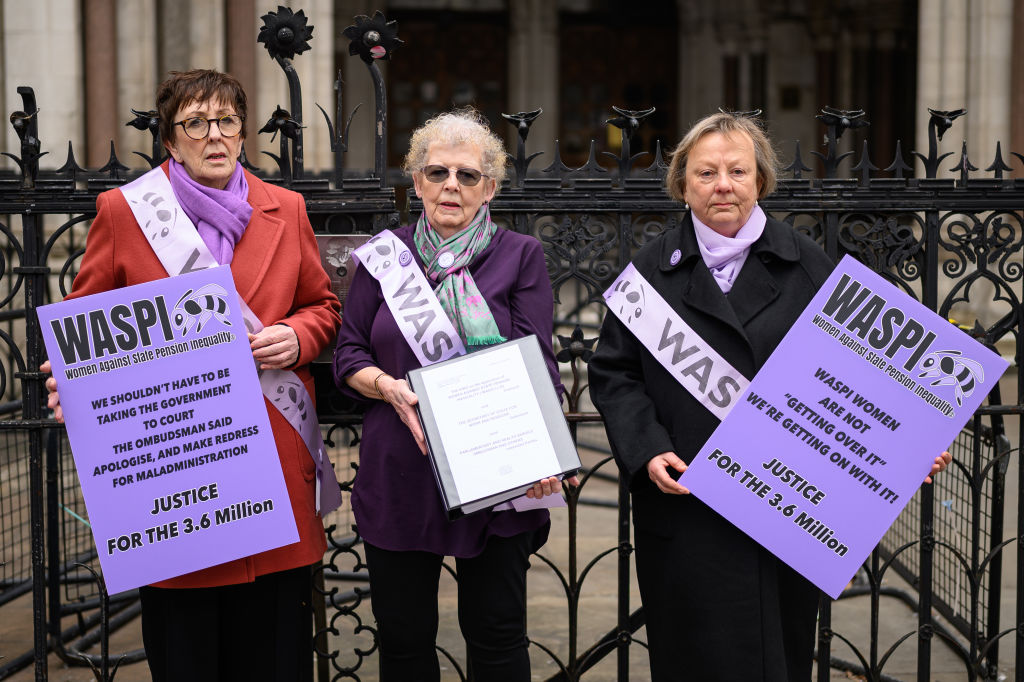The new social-care levy: an unfair tax that protects the “assetocracy”
The government’s regressive social-care levy will make Britain’s tax system even more complex. Root-and-branch reform is long overdue.

What has been announced?
The government is introducing a new tax to fund more spending on the National Health Service (NHS) and social care. From April 2022, national insurance contributions (NICs) will go up by 1.25 percentage points both for workers and employers, taking the standard rate to 13.25% for employees and 15.05% for employers. Self-employed people will pay 10.25%, compared to 9% now (on Class 4). From April 2023, the NI increase will be replaced with a separate “health and social care levy” that has the same effect, but will also be paid by pensioners still in employment (who don’t pay NICs). Of course, NICs are not an insurance scheme, despite the name. They are simply another form of income tax (with some different thresholds and exemptions, for added complexity), and a job tax paid by employers. This tax increase affects about 29 million workers, and means that people earning £30,000 a year – close to the average wage – pay £255 more per annum. For those earning £50,000, the bill is £505.
What about dividends?
In addition to NICs, there was also an unexpected 1.25-point rise in dividend tax rates, affecting investors in stocks and small business owners who pay themselves via companies. Basic-rate taxpayers will now pay 8.75% tax on dividends, higher-rate payers will pay 33.75%, and top-rate payers will pay 39.35% (on all dividends exceeding the £2,000 dividend tax-free allowance that sits on top of the £12,570 personal allowance). Many accountants see the dividend move as part of HMRC’s crackdown on “disguised employment” aimed at avoiding tax. For investors with extensive portfolios, the rise increases the incentive to hold dividend-paying stocks in individual savings accounts (Isas) or self-invested personal pensions (Sipps), which will not be affected.
How much will the government raise?
This “Johnson tax rise” amounts to £12bn per year (about 0.5% of GDP) for three years, says Liam Halligan in The Daily Telegraph. To that we can add the additional £25bn from the upcoming increase in corporation tax (from 19% to 25% in 2023) and freeze on tax thresholds. Together, these tax rises are the biggest in a single year since the 1970s, and will take the UK’s tax burden – meaning tax revenues as a share of GDP – to 35.5%, the highest since the 1940s. Nor should we rule out more rises in next month’s Budget (due on 27 October). “With public spending surging, and now at 42.4% of GDP, that can hardly be ruled out”, says Halligan. Even without more rises, it’s a strange time to be increasing taxes on business and workers – we are still emerging from a pandemic and evidence is mounting that the bounceback is already stalling.
MoneyWeek
Subscribe to MoneyWeek today and get your first six magazine issues absolutely FREE

Sign up to Money Morning
Don't miss the latest investment and personal finances news, market analysis, plus money-saving tips with our free twice-daily newsletter
Don't miss the latest investment and personal finances news, market analysis, plus money-saving tips with our free twice-daily newsletter
Will it improve social care?
No one knows, since no social care reforms have been announced. A white paper is due within weeks. However, in the first instance the extra money is going to tackle the backlog in the NHS caused by the pandemic. There’s a risk that the NHS will permanently “swallow up” the whole £12bn, says the Institute for Fiscal Studies, leaving nothing to fund social care plans.
Are the rises fair?
They don’t look it, say many critics. NICs kick in at around £9,500, meaning that even some people too poor to pay income tax are caught in the net. Graduates repaying student loans will be taxed at 50% on any increase in salary above £27,288. This means “increasing taxes on the working poor to safeguard the assets of the stonkingly rich”, says Fraser Nelson in The Spectator. It only serves to protect the new “assetocracy” of home-owning millionaires. A quarter of those aged 65 or over (three million people) live in households with net wealth of more than £1m, compared to 7% in 2008. Another three million are worth more than £500,000. Boris Johnson has privately admitted this to his MPs – and it’s a sorry definition of conservatism: “a protection racket, where the tools of the state are used to extract money from minimum-wage workers and pass it on to the better off,” says Nelson.
What would have been fairer?
The straightforward alternative to raising £12bn a year via this “dog’s dinner” would be a two percentage-point rise in income tax, says David Smith in The Sunday Times. The government hopes to bamboozle voters by using the “more mysterious and widely misunderstood” NICs instead. The result is something that “has further complicated our ludicrously complex tax system and introduced a bigger discrepancy into the tax treatment of the employed and self-employed”. What’s more, income tax is going up next year anyway. This supposedly low-tax government is stealthily freezing the personal allowance and higher-rate threshold for four years – creating 1.3 million new taxpayers and one million more on the higher rate, as well as bigger bills for all income-tax payers than if those allowances had risen with inflation.
Why not remove existing exemptions?
One of the reasons NICs are seen as an unfair tax is that pensioners – even wealthy ones with high incomes – don’t pay it. Nor is it paid on investment or property income. What’s more, the employee contribution falls from (currently) 12% of income to 2% on earnings over £50,270 a year, meaning that high-earners pay a lower proportion of their earnings in NICs than low earners. Removing all existing exemptions and earnings limits could raise considerably more than £12bn a year, making room for a cut rather than an increase in the overall NIC rate, according to a report by researchers at the London School of Economics and Warwick University, says Smith. But what’s really needed is a root-and-branch simplification of the tax system that merges income tax and NICs; equalises the rate of capital gains tax and dividends; and completely overhauls property taxes, says The Times. That would be fairer, simpler, and give taxpayers a clearer view of our ever-increasing tax burden.
Get the latest financial news, insights and expert analysis from our award-winning MoneyWeek team, to help you understand what really matters when it comes to your finances.
Simon Wilson’s first career was in book publishing, as an economics editor at Routledge, and as a publisher of non-fiction at Random House, specialising in popular business and management books. While there, he published Customers.com, a bestselling classic of the early days of e-commerce, and The Money or Your Life: Reuniting Work and Joy, an inspirational book that helped inspire its publisher towards a post-corporate, portfolio life.
Since 2001, he has been a writer for MoneyWeek, a financial copywriter, and a long-time contributing editor at The Week. Simon also works as an actor and corporate trainer; current and past clients include investment banks, the Bank of England, the UK government, several Magic Circle law firms and all of the Big Four accountancy firms. He has a degree in languages (German and Spanish) and social and political sciences from the University of Cambridge.
-
 Leading European companies offer long-term growth
Leading European companies offer long-term growthOpinion Alexander Darwall, lead portfolio manager, European Opportunities Trust, picks three European companies where he'd put his money
-
 How to harness the power of dividends
How to harness the power of dividendsDividends went out of style in the pandemic. It’s great to see them back, says Rupert Hargreaves
-
 The consequences of the Autumn Budget – and what it means for the UK economy
The consequences of the Autumn Budget – and what it means for the UK economyOpinion A directionless and floundering government has ducked the hard choices at the Autumn Budget, says Simon Wilson
-
 Big Short investor Michael Burry closes hedge fund Scion Capital
Big Short investor Michael Burry closes hedge fund Scion CapitalProfile Michael Burry rightly bet against the US mortgage market before the 2008 crisis. Now he is worried about the AI boom
-
 Why the Waspi women are wrong
Why the Waspi women are wrongOpinion Compensation for the Waspi women would mean using an unaffordable sledgehammer to crack a nut, says David Prosser
-
 Why UK stocks are set to boom
Why UK stocks are set to boomOpinion Despite Labour, there is scope for UK stocks to make more gains in the years ahead, says Max King
-
 Should ISA investors be forced to hold UK shares?
Should ISA investors be forced to hold UK shares?The UK government would like ISA investors to hold more UK stocks – but many of us are already overexposed
-
 How Germany became the new sick man of Europe
How Germany became the new sick man of EuropeFriedrich Merz, Germany's Keir Starmer, seems unable to tackle the deep-seated economic problems the country is facing. What happens next?
-
 Who is Jared Isaacman, SpaceX astronaut and Trump's pick as NASA chief?
Who is Jared Isaacman, SpaceX astronaut and Trump's pick as NASA chief?Jared Isaacman is a close ally of Elon Musk and the first non-professional astronaut to walk in space. Now, he is in charge of NASA
-
 'Rachel Reeves’s tax rise will crash the economy'
'Rachel Reeves’s tax rise will crash the economy'Opinion Rachel Reeves will be the first chancellor since Denis Healey in the 1970s to raise income tax. It will only push Britain into recession, says Matthew Lynn